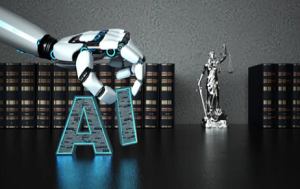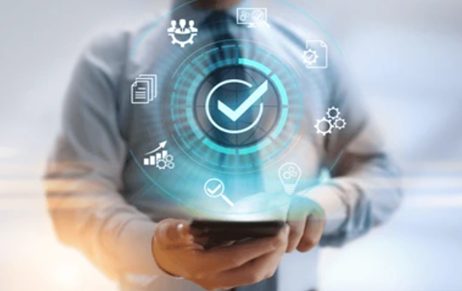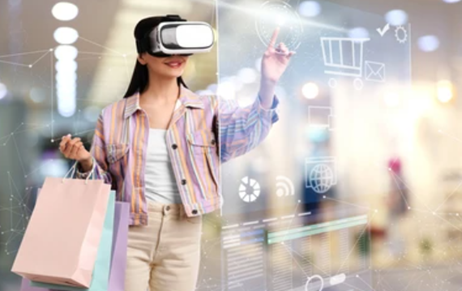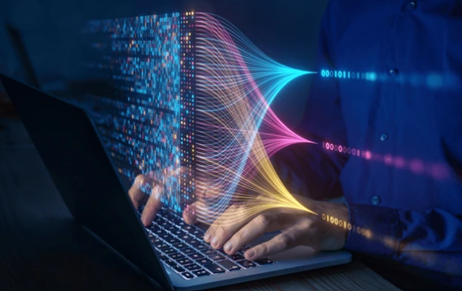The Southeast Asian regional grouping known as ASEAN is undoubtedly one of the most dynamic…
AI: Creator or Copier?
Introduction
Artificial intelligence (AI) has emerged as one of the biggest game-changers in recent years because of the innovative technologies that it has set forth. AI systems are becoming prominent from healthcare to entertainment now, based on the ability to learn new things, adapt to new situations and most of all the ability to produce content. Though, this technological advancement has its bearings on intellectual property (IP) law in a big way.
People have projected that more and advanced artificial intelligence systems can generate original work, solving problems, and even coming up with certain creative decisions. This poses some concerns on who owns the generated IPs and how it can be protected especially in this era of AI. It follows that traditional laws of IP which are meant for the creations of humans may not adequately cater for problems arising from AI.
Some of the most important and topical questions are the following one – Who Owns the Copyright For AI-Generated Work? Originally, the protection of copyright work was only given to human beings who have created the work. However, when the artificial intelligent systems can create literary works from scratch, one must wonder who rightfully owns the authorship of the work and therefore the copyright. Who is an author: the humans who programmed or trained the AI system or the AI system itself?
Yet another legal issue that might impair AI development is the issue of patent protection on AI inventions. New products and new processes can be invented using AI systems which triggers the issue of whether they are patentable. In some jurisdictions the validity and/or eligibility of AI- generated inventions for patent protection depends on several factors, for example, whether the invention is new, nonobvious, and useful. In addition, there is the issue of using artificial intelligence in identifying exposure to trademark infringement. The electronic marketplaces can also be supervised with the help of artificial intelligence to detect counterfeit products but, on the same note, there is a possibility that it can act as a tool to fix on competitors.
This branch of law: Artificial Intelligence and Intellectual Property Rights can be described as an area of emerging legal crossroads. This simply means that with increased development of AI technology other legal issues are probably bound to surface. It is then important for lawmakers, courts and all other IP practitioners to be familiar with such developments and to ensure that there exist codified laws in handling of IP rights within the realms of AI.
AI-Generated Content and Copyright: A Complex Legal Landscape
AI is on the way of continual improvements that has opened new frontiers of thinking and designing. Over the years AI systems have been developed to be the creators of multiple rather specific types of content including but not limited to articles, poems, music, artwork etc. But this technological improvement brought about great concern as to who owns IP in a world articulated by AI.
Copyright is another crucial matter due to the question of who owns the rights for the given content generated by AI. There are some solutions that have been suggested; The first possibility is to identify the human being who designed or taught AI to be the author of content that was created by him or her. This approach postulates that the human creator is responsible for the AI- generated content and as such the creator should be protected by copyright laws. However, in this way, it may be dangerous where an AI system trained on the large quantity of the copyrighted work is used without violations of the concept of fair use.
The other approach is to recognize the AI system as the author and hence extend its copyright ownership to whoever owns the system. This approach posits that the AI system was programmed and trained to create original content and for this reason, the AI system ought to be considered as the author. But this approach runs into the issue of the definition of authorship and whether an author could be a machine in the same vein as an authoring human.

Thus, notwithstanding copyright, other IP rights may also come into play with regard to an AI-generated content. For instance, in the event whereby an AI system designs a new product, then what is developed is capable of being patented. Likewise, if an AI system develops a new brand name or a logo then such name or logo could be protected by trademark law.
AI and the production of AI generated content gave rise to the multi-layered legal context. This is important for lawmakers, courts, and IP professionals and other persons to get acquainted with such developments and ought to come up with the right legal frameworks governing the protection of IP rights in the face of AI.
Patent Protection for AI Inventions
AI being at an advanced stage the development of new products and distinctive ways of working has occurred. With the advancement of AI technology, then the systems can actualize new creations that are within the patentability requirements. Nonetheless, the integration of AI in the field of patent law poses numerous legal challenges and is the reason why it is important to explain further.
Another factor of concern when seeking a patent on an AI invention is the basic requirement in most jurisdictions which is functional novelty, nonobviousness and utility. Novelty means that the invention must be novel and not disclosed prior to the application to the public.
In non-obviousness you need to make sure that the invention cannot be easily made by anybody who tends towards that field. Claim of utility means that inventions must serve a purpose.
Such requirements can be difficult to evaluate in inventions which have been generated by AI. For instance, if the data that is being fed to the AI system is a very huge database of prior art it becomes hard to distinguish between novelty and accumulation of prior art. Moreover, the issues of non- obviousness of inventions proposed by an AI can be quite challenging because, for instance, an AI algorithm or even a machine learning algorithm may be quite opaque to human comprehension.
There is one more concern when it comes to patenting inventions created with the help of AI – the question of who the inventor is. Here too it’s either the human or AI or the third approach is to adopt the concept of ‘dual ownership,’ where both the creator and the AI, are named inventors.
This poses another challenge in terms of patent protection of AI inventions because with AI it is possible to create new forms of inventions that cannot be easily classified under the conventional classification of patents. This makes it extremely hard to look for prior arts and to decide whether the invention is unique or not.
AI and patent law can be defined as an interesting and dynamic field. It is therefore expected that there will be emergent legal issues due to the improvement in the AI technology.
Trademark Law and AI: A New Frontier
Today, artificial intelligence stands as an extraordinary phenomenon that has done significant changes in many fields such as the trademark world. Brand and trademark are arguably some of the most valuable assets of any organization and this is why AI systems have been developed to provide the ability to generate brand names, logos and other work products that are trademarkable.
The biggest threat when it comes to trademarks and AI is appreciating whether the generated trademark has the merit of distinctiveness that warrants protection. Classically, they must be distinctive and should not be like the other marks in the marketplace. AI systems, however, can create many potential trademarks, and this can certainly lead to such problems as can occur with human-generated trademarks.
The last problem is the question of ownership of trademarks created by AI. Unfortunately, the laws also present a gap in that there is no clear way to determine who the owner of a trademark is if the trademark was produced using an AI system. This question is particularly tricky when the AI system is trained on a set of existing trademarks.
Moreover, ethics violations can be found in the utilization of AI for the identification of the trademark infringement.
Issues concerning the trademark law and AI also imply the future prospects of conventional trademark search and registration services. Such processes can be managed by the help of AI systems, which will increase the speed and quality of the processes. But it could also result in monopoly influence with chief technology companies usurping the role of regulators.
Besides these factors, emergence of AI and AI trademark generation factors has prompted worry over trademark dilution. It can also be a way of creating lots of trademarks, similar to the famous brands and therefore weakening the value of the brands.
Trademark and artificial intelligence respectively are two different bodies of law that have intertwined with each other in one way or the other. It can be predicted that with the constant development of AI the field will present new legal questions.
The Legal Perspective on AI and Intellectual Property
The field wherein artificial intelligence (AI) and intellectual property (IP) law converge raises many issues. Several jurisdictions do not have distinct legislation with regard to the interaction of AI and IP.
Copyright Act, 1957 (India)
Authorship: In India, the author is normally a human being, and this is with reference to the country’s copyright law. However, there are legal concerns to the authorship of content created through AI.
Fair Use: One of the principles based upon copyright law is the doctrine of fair use which permits the copying of copyrighted material for purposes like, to criticize it, comment on it, to report news, for teaching purposes or for research purposes. It may have some relevance to the generation of the content using AI.
The Patents Act, 1970 (India)
Patentability: For an invention to be patented the invention must meet three requirements of novelty, non- obviousness and utility. The concepts that inventions present might hold some challenges in meeting these requirements especially those generated by AI.
Inventorship: There is a need to determine who the inventor is when it comes to inventions made through the use of artificial intelligence.
The Trademarks Act, 1999 (India)
Distinctiveness: For trademarks to be protected they must be unique. Trademarks generated by AI may have some problems to satisfy this requirement.
Ownership: This issue relates to ownership of trademarks developed using AI as a major issue. This depends on the circumstances surrounding the creation and utilization of the trademark.
International Treaties
The Berne Convention for the Protection of Literary and Artistic Works sets out the basic requirements for the protection of copyright.
This is so following the rules laid down by the Paris Convention for the Protection of Industrial Property in as much as patents and trademarks are concerned.
International intellectual property laws are anchored on the TRIPS Agreement (Trade Related Aspects of Intellectual Property Rights) which establishes the minimum standards of protection of IP when dealing with international trade.
Conclusion
AI and IP law is a rather emerging contentious field of law, and it is concerned with legal issues of many different natures arising out of the application of artificial intelligence systems. Thus, one can conclude that as the technology of AI develops new legal issues are sure to emerge. Both lawmaker’s courts and IP professionals must be aware of such development so that they can put in place sufficient legal frameworks that would address the protection of IP rights under the influence of AI.
As the use of AI continues to evolve, the issue of who owns the copyright in the creation, especially where the AI system has been used to produce original works, is probably the biggest question mark for the future of AI and IP law. Some attempts have been made regarding this issue, nevertheless, there is still no definitive answer as to who the author of an AI content is. Hence, it is expected that as AI systems become more advanced, this problem would be even worse.
One problem is that of patenting AI related products and inventions. As for the criteria for eligibility to obtain patents, the courts and patent offices are still indeterminately approaching this issue.
There are thus ethical issues with applying AI in detecting the trademark infringement. Although there is evidence that AI can offer a great potential in the fight against counterfeit products, there is a potential that the technology will be abused in an attempt to manipulate genuine competitors or gather too much information on the consumers.
Not only do these situations present such challenges but the growth of the concepts of AI and the growing incorporation of products created by AI pose possibilities for the future of conventional laws on IP. There is a potential possibility of the need to revolutionize the notion of copyright and patent protection.
In order to overcome these issues, it is crucial that lawmakers, courts and IP specialists establish suitable legal regulations. It can involve the changes of existing laws on IP, formulation of new laws on IP, or use of international norms.
All in all, the authors found that the relationship between AI and IP law is complex, and the field is developing and expanding rapidly. It is therefore crucial for legislators, judiciary and the IP practitioners to be up to date with the AI advances as well as coming up with mechanisms with which IP assets may be protected in the face of AI.
Author: Suryansh Mishra, in case of any queries please contact/write back to us via email to chhavi@khuranaandkhurana.com or at IIPRD.
References
- Artificial Intelligence and Law by Ryan Abbott
- The Patent Paradox: Innovation, Appropriability, and Economic Growth by William Kingston Copyright Law: A Practitioner’s Guide by Peter Yu
- Copyright and Artificial Intelligence: A Complex Legal Landscape by Matthew Sag
- Patent Protection for AI Inventions: A New Frontier by Mark Lemley
- Trademark Law and AI: A New Frontier by David G. Angell
- Ethical Considerations in the Age of AI and IP by James Bessen
- The Legal Perspective on AI and Intellectual Property by David G. Angell



